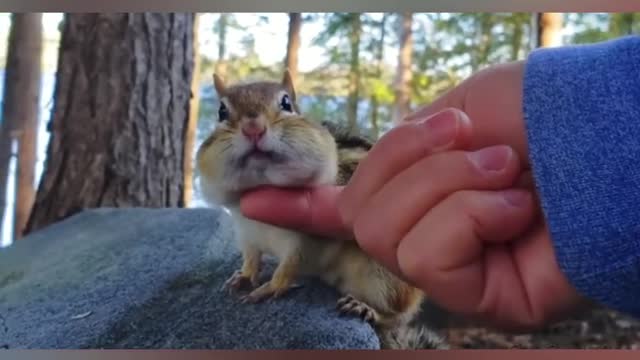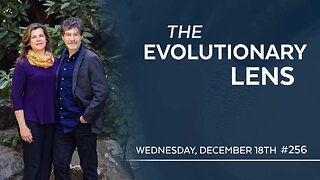Premium Only Content

foodie chipmunk
Chipmunks are small, striped rodents of the family Sciuridae. Chipmunks are found in North America, with the exception of the Siberian chipmunk which is found primarily in Asia.
Chipmunks may be classified either as a single genus, Tamias, or as three genera: Tamias, of which the eastern chipmunk (T. striatus) is the only living member; Eutamias, of which the Siberian chipmunk (E. sibiricus) is the only living member; and Neotamias, which includes the 23 remaining, mostly western, species. These classifications were treated as subgenera due to the chipmunks' morphological similarities. As a result, most taxonomies over the twentieth century have placed the chipmunks into a single genus. However, studies of mitochondrial DNA show that the divergence between each of the three chipmunk groups is comparable to the genetic differences between Marmota and Spermophilus,so the three genera classifications have been adopted here.
The common name originally may have been spelled "chitmunk", from the native Odawa (Ottawa) word jidmoonh, meaning "red squirrel" (cf. Ojibwe ᐊᒋᑕᒨ ajidamoo). The earliest form cited in the Oxford English Dictionary (from 1842) is "chipmonk", but "chipmunk" appears in several books from the 1820s and 1830s. Other early forms include "chipmuck" and "chipminck", and in the 1830s they were also referred to as "chip squirrels", probably in reference to the sound they make. In the mid-19th century, John James Audubon and his sons included a lithograph of the chipmunk in their Viviparous Quadrupeds of North America, calling it the "chipping squirrel [or] hackee". Chipmunks have also been referred to as "striped squirrels", "timber tigers", "minibears", and "ground squirrels" (although the name "ground squirrel" usually refers to other squirrels, such as those of the genus Spermophilus)
Chipmunks have an omnivorous diet primarily consisting of seeds, nuts and other fruits, and buds.They also commonly eat grass, shoots, and many other forms of plant matter, as well as fungi, insects and other arthropods, small frogs, worms, and bird eggs. They will also occasionally eat newly hatched baby birds.Around humans, chipmunks can eat cultivated grains and vegetables, and other plants from farms and gardens, so they are sometimes considered pests.Chipmunks mostly forage on the ground, but they climb trees to obtain nuts such as hazelnuts and acorns. At the beginning of autumn, many species of chipmunk begin to stockpile nonperishable foods for winter. They mostly cache their foods in a larder in their burrows and remain in their nests until spring, unlike some other species which make multiple small caches of food. Cheek pouches allow chipmunks to carry food items to their burrows for either storage or consumption.
-
 39:11
39:11
Sarah Westall
2 hours agoDigital Slavery and Playing with Fire: Money, Banking, and the Federal Reserve w/ Tom DiLorenzo
28K1 -
 DVR
DVR
2 MIKES LIVE
6 hours ago2 MIKES LIVE #157 ILLEGALS, PROTESTORS AND DRONES!
16.9K1 -
 1:01:03
1:01:03
LFA TV
1 day agoTHE LATEST SPENDING BILL IS AN ABOMINATION! | UNGOVERNED 12.18.24 5pm EST
23K26 -
 1:43:34
1:43:34
Redacted News
5 hours agoBREAKING! WARMONGERS PUSHING TRUMP TO LAUNCH PRE-EMPTIVE WAR WITH IRAN | Redacted News
125K222 -
 1:00:26
1:00:26
Candace Show Podcast
5 hours agoPiers Morgan x Candace Owens | Candace Ep 123
70.7K184 -
 2:06:51
2:06:51
Darkhorse Podcast
8 hours agoThe 256th Evolutionary Lens with Bret Weinstein and Heather Heying
55.8K25 -
 3:08:08
3:08:08
Scammer Payback
5 hours agoCalling Scammer Live
33.5K3 -
 1:21:25
1:21:25
Mally_Mouse
9 hours agoLet's Yap About It - LIVE!
82K9 -
 5:35
5:35
Cooking with Gruel
1 day agoMaking Fresh Salted Caramel
66K7 -
 16:16
16:16
DeVory Darkins
22 hours ago $10.86 earnedMedia Panics after Trump Threatens to Sue Media for Defamation
63.9K121